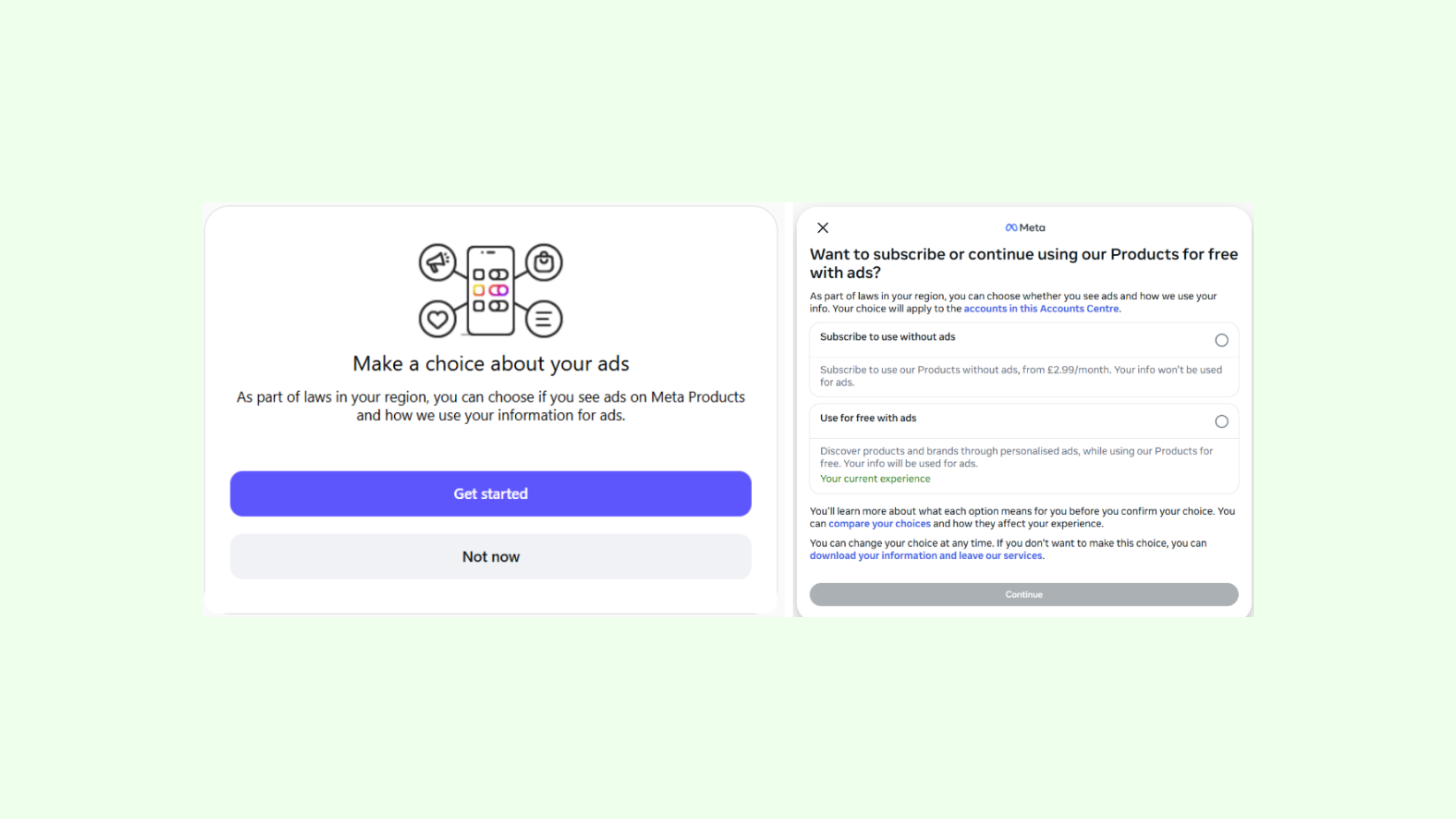Meta Goes Ad-Free & TikTok Becomes a Search Engine Powerhouse
Meta has officially launched an ad-free option for Facebook and Instagram in the UK. For a few pounds a month, users can now scroll in peace with no ads.
Meanwhile, TikTok is silently rebranding itself as everyone’s favorite search engine. From “best pasta recipe” to “how to make a PowerPoint in 10 minutes,” users are saying bye to Google and hi to TikTok for short-form video answers…usually featuring someone dancing while explaining in true TikTok fashion.
For brands and advertisers, this means two things: your audiences may shrink as they take back control and your brand’s creativity needs to stretch. Time to think less about ad placement, more about audience engagement and how you can make other channels and your creatives work harder.
Meta: Ad-Free Subscriptions in Europe
Meta is introducing a paid, ad-free tier for Facebook and Instagram users in the UK.
Meta has now started rolling out a paid, ad free tier for Facebook and Instagram users. Users over 18 can either continue using the platforms for free with personalised ads or pay a small monthly fee of £2.99 via web or £3.99 via mobile to experience ad free social networking across Meta platforms.
Meta says this option responds to regulatory demands and gives users control over how their data is used.
For brands and marketers, this change could alter how audiences are reached and how ad spends are allocated across paid social platforms. Some users opting out of ads entirely will ultimately make effective targeting and reach become more challenging.
Brands should begin re-thinking paid social strategies and reinforcing creative, community-driven and owned-media content.
Ads will still run for most users but with an “opt-out” option now available, advertisers need to plan for fewer reachable eyeballs, higher competition for those still in the auctions and more creative investment to earn attention versus buy it.
Key implications for advertisers
- Decrease in reach as pool of people who can be reached through personalised ads will begin to shrink.
- Change in audience quality if those with higher spending power are privacy conscious and opt in to an ad free experience, remaining audience pool may differ in value than before.
- Increased investment for non-paid channels with a need for greater focus on organic, creative and community driven content.
- Opportunity for increased influencer and partnership marketing.
- Identify other paid channels to scale and diversify spends including first-party data channels.

TikTok is quickly emerging as a search engine with increased adoption from younger audiences
We all know TikTok as platform that is the home of dance trends, story times, GRWM and so much more however this year the platform’s evolution has seen it become the next go-to search engine.
The same way people are using Google and Bing to search for answers to their questions is how they are using TikTok, with results being faster, visual and personalised creating a shift in discovery behaviors.
A study by Adobe revealed that over 2 in 5 people have use TikTok as a search engine with a greater shift within younger demographics where 64% of Gen Z and 49% of millennials are using TikTok as a search engine. 1 in 10 Gen Z prefer TikTok over traditional search engines. Sorry Google!
TikTok search engine works by combining keyword relevance and video performance to determine what ends up in the SERP. This process also includes the platform scanning captions, hashtags, text overlays and narration pairing with engagement metrics and if it aligns with the query, it’s a strong match for the search query.
Key implications for advertisers
- Keyword optimisation matters on TikTok. Meaning content needs to be readily discoverable utilising elements such as text overlays, voice overs etc.
- Targeting behavioural intent to capture those on the platform looking for answers and inspiration.
- Create content that aligns with the query, it’s a strong match for the search.
- Weave in TikTok in cross-platform strategies and channel diversification as its quickly becoming a key search destination. It’s probably not enough to keep relying on Google and other search engines alone for discovery.




